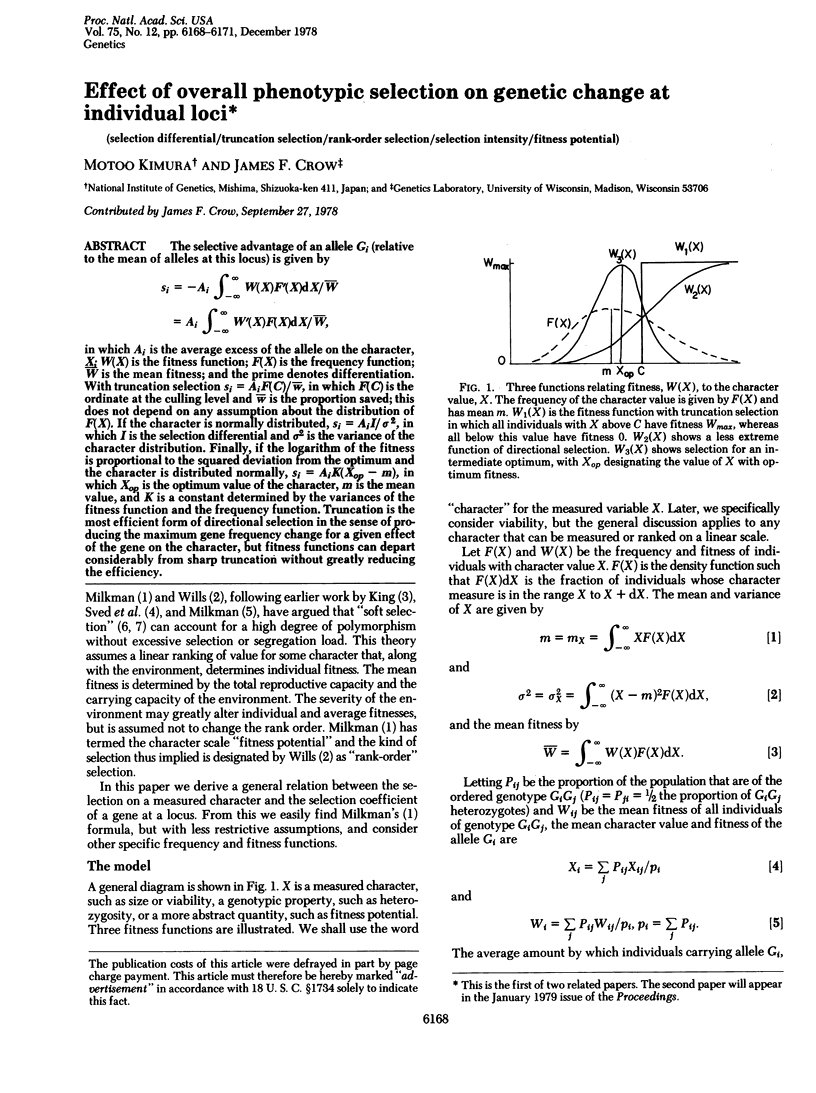Effect of overall phenotypic selection on genetic change at individual loci (original) (raw)
Abstract
The selective advantage of an allele Gi (relative to the mean of alleles at this locus) is given by (formula: see text) in which Ai is the average excess of the allele on the character, X; W(X) is the fitness function; F(X) is the frequency function; W is the mean fitness; and the prime denotes differentiation. With truncation selection si = AaF(C)/w in which F(C) is the ordinate at the culling level and w is the proportion saved; this does not depend on any assumption about the distribution of F(X). If the character is normally distributed, si = AiI/sigma2, in which I is the selection differential and sigma2 is the variance of the character distribution. Finally, if the logarithm of the fitness is proportional to the squared deviation from the optimum and the character is distributed normally, si = AiK(Xop--m), in which Xop is the optimum value of the character, m is the mean value, and K is a constant determined by the variances of the fitness function and the frequency function. Truncation is the most efficient form of directional selection in the sense of producing the maximum gene frequency change for a given effect of the gene on the character, but fitness functions can depart considerably from sharp truncation without greatly reducing the efficiency.

Selected References
These references are in PubMed. This may not be the complete list of references from this article.
- King J. L. Continuously distributed factors affecting fitness. Genetics. 1967 Mar;55(3):483–492. doi: 10.1093/genetics/55.3.483. [DOI] [PMC free article] [PubMed] [Google Scholar]
- Milkman R. D. Heterosis as a major cause of heterozygosity in nature. Genetics. 1967 Mar;55(3):493–495. doi: 10.1093/genetics/55.3.493. [DOI] [PMC free article] [PubMed] [Google Scholar]
- Milkman R. Selection differentials and selection coefficients. Genetics. 1978 Feb;88(2):391–403. doi: 10.1093/genetics/88.2.391. [DOI] [PMC free article] [PubMed] [Google Scholar]
- Sved J. A., Reed T. E., Bodmer W. F. The number of balanced polymorphisms that can be maintained in a natural population. Genetics. 1967 Mar;55(3):469–481. doi: 10.1093/genetics/55.3.469. [DOI] [PMC free article] [PubMed] [Google Scholar]
- Wills C. Rank-order selection is capable of maintaining all genetic polymorphisms. Genetics. 1978 Jun;89(2):403–417. doi: 10.1093/genetics/89.2.403. [DOI] [PMC free article] [PubMed] [Google Scholar]